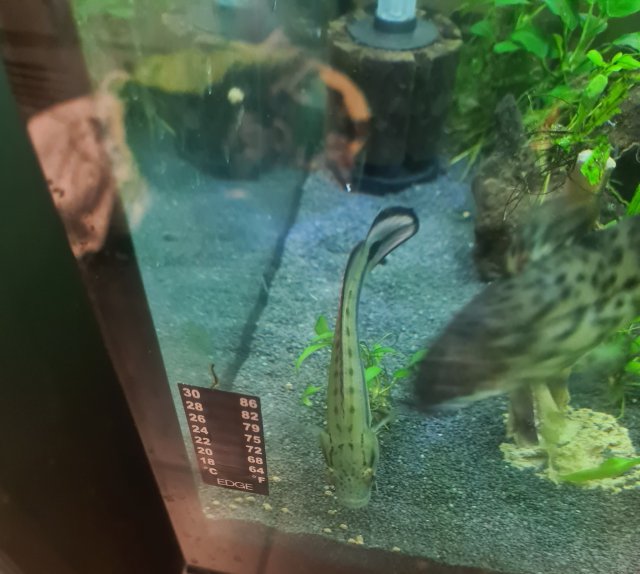Feed only once a day, everyday until it shows its adult colors (either all grey or yellow faced with grey body, maybe pink in the belly). If you want to keep the torpedo shape have a wavemaker of at least 1500 gph so that it is swimming against the current for periods of the day for 30 minutes to 1 hour, several times a day. Their natural habitat consists of a high flow area that requires snorkelers to hold on to branches in order to stay still and watch swimming pikes.
Once it hits 10" no more than twice a week of pellets, maybe 3 times a week of frozen food, or twice a week of feeding with pellet frozen combo on different days. You can do this at 2 years of age. After 5 years of age no more than once a week (pellets once or twice a month). Feeding 3 times a week past 2 years will certainly make your pike fat.
Lack of swimming against a current will make your pike fat. The only pikes that hardly swim against a current are in the dwarf pike family.
Also, those marking are indicative that your pike is around 1 years of age.










